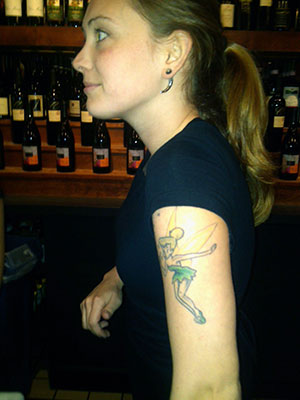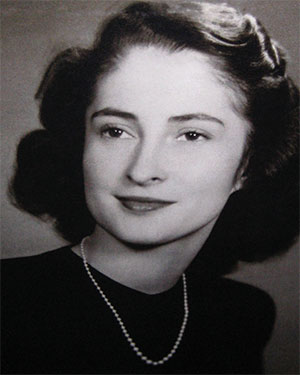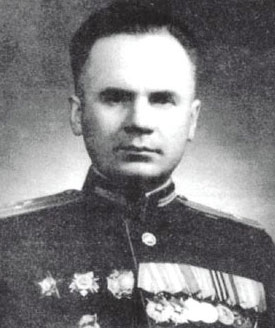Carol and Billie

(Tinker Belle and her distinctive ink behind the bar at Willow).
Tinker Belle was serving the drinks behind the Willow’s long bar when I came in off the street. Admiral Mac Showers had already arrived, and I brightened when I saw that he was permitting himself an Anchor Steam beer, which meant that his session with the oncologists had a positive outcome that week. I like Tinker Belle- she is from New Orleans and we laugh about the Cajun antics we have seen down there, and the joy their bring to their culinary art. In fact, Tink might be my favorite Willow bartender except for Liz-with-an-S, whose intelligent banter, chestnut hair and slim elegant neck make her as vital a feature at the bar as the alcohol. Almost.
I was not at all focused on the discussions with Mac. I vaguely wanted to get to the Vietnam Era, since I worked a project about the period that I still cannot fully unravel. But as with all these discussions, I decided to just see where it wandered on its own. I swear sometimes the Willow acts like a time machine, or the spinning circle from the Wheel of Fortune. This languid afternoon we landed in 1962, as Mac talked about some of the people he worked with in the Special Intelligence Branch of the Office of Naval Intelligence.
“My senior civilian in “Y ” Branch at that time was Ed Nielsen. I had known him since the late ’40s, when he came to work in Y-1, and he and I were long-time friends, and I was comfortable having him as a senior civilian assistant in Y-Branch. We both arrived early in the morning around 0700, we compared our notes, and did our things, almost before other people go to work. It was during this tour, and while working with Ed, that the DeSoto Operations began.”
“Yeah. The traffic is so bad here, and the parking, that I would be in the Pentagon by 0600. You explained about how you named it ‘Desoto,’ beginning with the name of the destroyer that did the surveillance operations and to save characters in the message title line. It was from the destroyer’s name, right? ”
“Right. It was the De Haven (DD-727). I won’t go into that again, but I will say that in a subsequent DeSoto·Operation there was an interesting development. I have not talked a lot about my wife billie and the three kids. We certainly dragged them all over the world, and naturally though the hours were long, we lived in some nice place. So it would have been on the second or third of the collection operations that Ed and I got a chance to give something back to the wives. The operating area was off Shanghai, at the mouth of the Yangtze River. As we developed the collection list, one of the requirements was put on by the Office of Naval Research (ONR) to try to collect water samples out of the Yangtze River to determine whether there were any nuclear activities being conducted upriver that would be detectable from the effluent coming out of the Yangtze off Shanghai. For this purpose, ONR provided two pieces of equipment that the destroyer was going to have to lower into the water to collect water samples in certain places and at certain times.”
“I like Shanghai. I always was fascinated when we took the train in the New Territories in Hong Kong that we could have just stayed on until we crossed the border and ridden on to the exotic and inscrutable East.”
“I don’t think you commanding officer would have approved before the Brits gave Hong Kong back,” said Mac. “But now it is no big deal. Just don’t take your personal computer with you. But for the Yangtze collection mission, there were some
rather complicated instructions from ONR on how to properly operate the complicated pieces of equipment. I remember it because we needed separate but non-descriptive code names for these two pieces of gear so that we again didn’t have a long phrase to describe what we were trying to do.”
“Just like the DeSoto name,” I responded. “Brevity is the soul of elegance. So what did you call them?”

(Mrs. Donald “Mac” Showers, aka “Billie).
“It was simple. We named one piece of equipment “Carol,” after Ed Nielsen’s wife. The other piece was code-named “Billie” for my wife. This DeSoto patrol off Shanghai carried Billie and Carol equipment”.
“And the crews kept lowering them into the water trying to detect atomic effluent corning out of the Yangtze. I don’t think they ever detected any. Later in that tour — it was only a year — Ed Nielsen was replaced by George Kidd. This was Admiral “Rufe” Taylor’s doing. He felt that George Kidd, who was the senior civilian in ONI and had had well-rounded experience in ONI, ought to have experience in OPINTEL, which he had not had. So, Admiral Taylor replaced Ed Nielsen with George Kidd. And as good a friend of mine as George Kidd was, and continued to be, he never really understood and appreciated OPINTEL. And to lose Ed Nielsen and to have to teach George Kidd about OPINTEL, and expect him to function effectively as a senior civilian in the “Y” Branch, was a difficult undertaking.”
“Did Ed stay in “Y” Branch?
“No. I can’t remember where he moved to, but I think he moved up toward the front office because he later became the senior civilian and Technical Assistant to the DNI after I had left.”
“Wait- I actually know the name now. Didn’t they name the annual ONI award for analytic excellence the Nielsen Award?”
“They certainly did. Ed was a smart guy who put in tremendously long hours. A real analytic workhorse, and a unqiue individual. I knew him from the day we hired him until the day he died. He worked hard and always was full of ideas and enthusiasm. He was a delight to have around and be able to depend on. Which rimnds me: During my tour at Y1 we had a remarkable look into how the Soviets really were organized. We got copies of what were called The Penkovsky Papers.”

(GRU Colonel Oleg Penkovsky).
“That was a major intelligence coup,” I said, dropping my pen and taking a sip of wine. “Maybe the biggest of the era. Wasn’t Oleg Penkovsky a colonel in Soviet military intelligence- the GRU- and the highest-level Soviet officer to spy for the United States or Great Britain up to that time?”
“Absolutely. It was a trove of material. During his time in uniform, he grew disillusioned with the Soviet regime and wanted to help prevent a nuclear war between the superpowers, so he volunteered to spy for the United States and the United Kingdom.”
“Was he real? There is so much fakery in the HUMINT Business.”
“We thought so. And thus the problem on how to exploit it. Navy got the material from Langley, of course, but they came with the explicit understanding that we could read them but make no attribution to Penkovsky as the source. We could be influenced by them, but we could not compormise sources and methods. That made our problem very difficulrt because of the wealth of information the papers contained. One of the most import things in the papers were the Soviet “Military Thought” articles, which was a classified publication similar to our US Naval institute Proceedings, but more authoritative because it was officially blessed by the Kremlin, and classified in their channels. The articles contained information about Soviet naval tactics and stragey, which represented new trhinking and new things that should hae been made available more widely to our Navy that might have to confront Admiral Gorshkov’s expanding fleet.”
“In World War II didn’t you conceal the information gleaned from Japanese Codes in a low-level classified weekly Fleet Intelligence Bulletin and attribute the information to press reporting or Coast Watchers?”
“Yes, and it worked to protect the source of the information. Ed and I put our heads together and decided to write a “Think Piece” that was not attributed to the Papers. It was written as a speculation that the Soviets would be able to launch a ballistic missile that wouldd impact over a task force with a nuclear warhead. A blassitic missile that could be launched either from shore or from antohr ship or from submarines that would attack a task force at sea.”
“This was 1962 and the Missile Crisis was still on the horizon?”
“Yes. The paper we wrote was classified TOP SECRET and was given to a very limited distribution within the OPNAV Staff. It did go to the OP-03 and 05 crowd, to key offices we felt needed to know about this tactical development. From the source materials, we knew this was not speculation, and it really was something the Soviets planned on adding to their strategy. Of course, we could not say that. All we could do was speculate that this was something the Soviets might do.”
“Oh Lord. Protect the hapless intelligence wienie who tells the senior ship-driver in Acquisition that his ships are all going to get melted by the Godless Commies.”
“Precisely. The E-ring in the Pentagon and the Surface Warfare Community got so upset over our paper that DNI Frost was directed to recall and destroy all copies of the paper and not to pursue the subject further.”
“That wasn’t the end of the matter, though, was it?”
“No. It is still being written about in the open-source literature. As we destroyed our paper, Ed and I regretfully concluded that we were ordered to shred the paper because of the “not invented here” syndrome. And we had to do it, had to comply with the order and destroy all that wonderful analysis.”
“There was no way to get the CIA to reconsider their restriction on the information so you could prove what you had written about?”
“Not then. CIA was unyielding in their security control with the Penkovsky Papers.”
“And the Navy was left vulnerable and exposed to tactics we could not mention, even though we knew.”
“Bingo.”
I sighed. Plus ca change and all that.
Copyright 2017 Vic Socotra
www.vicsocotra.com
